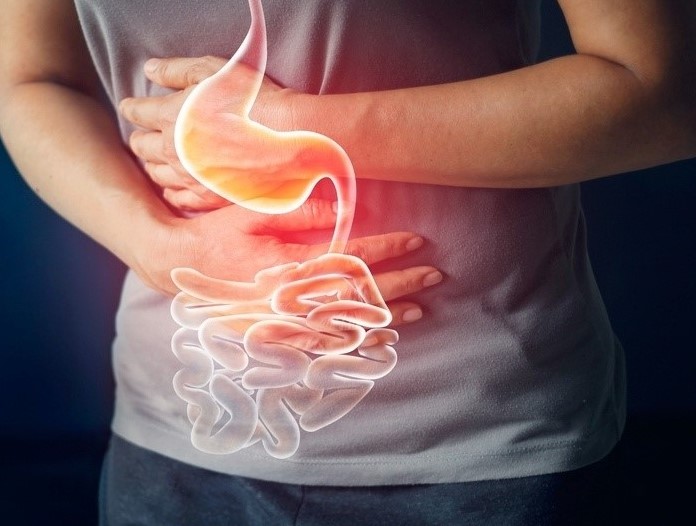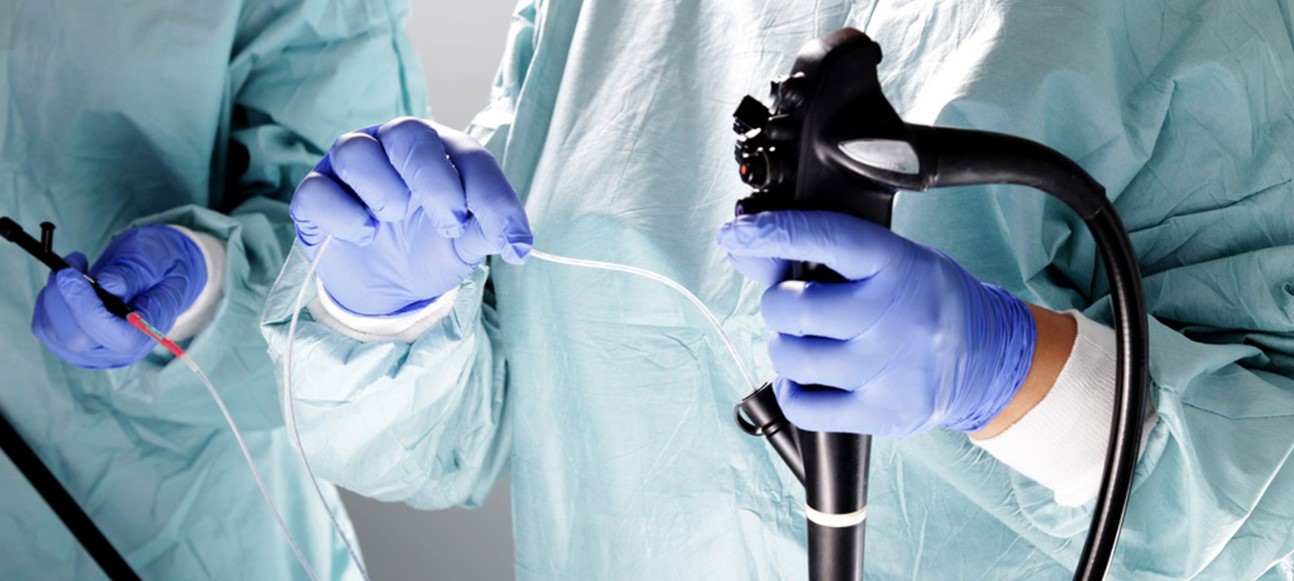Gastrointestinal diseases
The branch of medicine that deals with problems of the digestive system is called gastroenterology.
Some of the important topics covered by this branch include:
✔ Reflux
✔ Ulcer
✔ Gastric cancer
✔ Pancreatic cancer
✔Gallbladder diseases
✔Pancreatitis
✔ Colon cancer
✔ Ulcerative Colitis
✔Hemorrhoids
Interests of Gastroenterology

Reflux
Reflux is the term used to describe the backflow of acidic fluid from the stomach into the esophagus.
The most commonly observed symptom of this condition is heartburn. Additionally, regurgitation of food into the mouth is a common symptom as well.
Reflux can sometimes occur at night and disrupt sleep. Difficulty swallowing and a feeling of discomfort can also be indicative of reflux.
Factors that can contribute to reflux include dietary habits, excess weight, the use of tight clothing, pregnancy, certain medications, alcohol, smoking, and stress.
Reflux is generally a chronic condition that lasts a lifetime. Therefore, individuals with reflux should avoid triggering factors and learn to reduce their symptoms through simple measures whenever possible.
In cases where simple measures are not sufficient, medications such as syrups or chewable tablets can help alleviate symptoms.
Today, reflux can be treated by narrowing the entrance of the stomach using a method called laparoscopy. This treatment, known as fundoplication, prevents complaints like heartburn and regurgitation in about 90% of cases.
Ulcer
Ulcers are called wounds that are larger than 0.5 cm and occur in the stomach or duodenum. Ulcers can cause complaints such as stomach pain, acidity, burning sensation, rapid satiety, nausea, and vomiting.
The most reliable way to diagnose ulcers is by performing an endoscopy. Ulcers can heal completely without treatment, but they are likely to recur within 1-2 years.
Recurrent ulcers become more difficult to heal and pose greater risks. The goal of ulcer treatment is to heal the active ulcer and prevent the formation of new ulcers. In medical treatment, the vagus nerve and stomach acid, which stimulate and activate the stomach, are suppressed. Additionally, antibiotics are used to heal the wound.

Gastric cancer
Stomach cancer is the second most common cancer after lung cancer. One out of every 10 cancer patients develops stomach cancer. Dietary habits play a significant role in the development of stomach cancer. Additionally, genetic factors are also considered causes of stomach cancer. There are no early symptoms of stomach cancer. In high-risk individuals, the disease can be diagnosed through endoscopy. However, in advanced stages, the following symptoms may appear:
✔ In half of the patients, a mass is observed during manual abdominal examination.
✔ Pain in the stomach area and a feeling of fullness in the stomach.
✔ Loss of appetite and resulting weight loss.
✔ Post-meal discomfort and bloating.
✔ Nausea and vomiting.
✔ Most stomach cancer patients also suffer from anemia.
✔ Fatigue.
✔ Bleeding in the stomach or intestines.
The most effective way to diagnose stomach cancer is through endoscopy. In the treatment of stomach cancers, the stomach is surgically removed; surgical methods are used. Depending on the type of cancer, radiation therapy and medication are administered after surgery.
Pancreatic cancer
Pancreatic cancer is an extremely difficult-to-treat disease. Men are more susceptible to this disease than women. Smoking, alcohol, and an irregular lifestyle also increase the risk of pancreatic cancer. Its symptoms may not be immediately noticeable, making early diagnosis challenging. Patients generally experience loss of appetite and fatigue. Sometimes, nausea and vomiting may also occur. Jaundice is also a symptom of pancreatic cancer. The treatment method varies depending on the stage of cancer in the patient. Surgery, radiation therapy, or chemotherapy can be used to treat pancreatic cancer.
Pancreatitis
Pancreatitis is inflammation of the pancreas. The most common symptoms are:
✔ Abdominal pain, especially in the middle or upper right part of the abdomen.
✔ Nausea and vomiting.
✔ Jaundice.
✔ Low blood pressure and fainting.
✔ Fever.
In the past, surgery was used to treat pancreatitis, but today medical treatment and intensive care are preferred, as well as surgery if necessary. The type of treatment depends on the severity of the pancreatitis attack.
Gallbladder Diseases
The gallbladder stores a fluid called bile produced by the liver. When we feel hungry, the stored bile in the gallbladder is concentrated and stored there. When we eat, the gallbladder contracts and sends the bile into the intestines, ensuring fat digestion.
Gallbladder Polyp
Gallbladder polyps are benign tumors in the gallbladder. If the size of the tumor is 20 mm or larger, the risk of developing cancer increases. In the treatment of gallbladder polyps, the polyps themselves cannot be removed, but it is necessary to remove the entire gallbladder. Gallbladder surgeries are now performed laparoscopically.
Gallbladder Stone
Gallstones form when there is an imbalance in the substances in the bile. There are different types and sizes of stones. Gallstones generally begin to form between the ages of 30-40 and increase with age. Aging and obesity accelerate stone formation. 70-80% of those with gallstones do not experience any complaints. However, sometimes symptoms such as pain, bloating, and nausea in the upper right part of the abdomen or back may occur. Gallstones have a 1% chance of developing into cancer. Therefore, if the size of the stone is larger than 2 cm, surgery is recommended, whether there are symptoms or not.
Colon cancer
The colon is part of the digestive system that comes after the small intestine and is approximately 2 meters long. Colon cancer ranks third in terms of incidence among all types of cancer. In the first stage of colon cancer, symptoms such as abdominal bloating, mild pain, loss of appetite and weight, fatigue, and diarrhea or constipation may appear.
These symptoms may not be specific to colon cancer; however, if you have these symptoms, you should definitely consult a doctor. The treatment for colon cancer is surgery. The tumor is surgically removed, and then the lower and upper parts of the removed section of the intestines are reconnected. Radiation therapy is not applied to colon cancer. However, chemotherapy (drug therapy) may be given after surgery.
Hemorrhoids
This condition, also known as piles, involves the swelling of veins in the rectal area or their appearance as varicose veins. Rectal bleeding, especially during straining, is one of the most common symptoms. In addition, protrusion from the rectal opening during straining, or pain or itching around the rectal opening, are also common complaints. In the treatment of hemorrhoids, non-surgical methods are preferred initially. If these methods fail to achieve results, surgery may be necessary.
Ulcerative Colitis
Ulcerative colitis is a disease in which ulcers form due to inflammation of the large intestine. Ulcers and bleeding occur in the colon. The cause of ulcerative colitis is not fully known. The most common symptoms include diarrhea containing blood and mucus. There may be multiple bowel movements per day, up to 20, depending on the severity of the disease. Other symptoms include fatigue, weakness, and palpitations due to blood loss. Ulcerative colitis is a disease that can be controlled with medication but lasts a lifetime. The disease flares up from time to time and then subsides. Therefore, it is advisable to continue medication for life. In ulcerative colitis, surgical treatment can be applied in cases where the disease cannot be treated despite drug therapy, and the side effects of the drugs cannot be tolerated, and there is a risk of perforation or cancer.
If this type of surgery is to be performed, the entire colon must be removed, not just the affected part.
Diagnostic Methods Used in Gastroenterology
Diagnostic Methods Used in Digestive System Diseases:
✔ Colonoscopy
✔ Gastroscopy
✔ ERCP
✔ CT (Computed Tomography)
✔MR Imaging
✔ Ultrasound
✔Biopsy
✔ PET / CT

Colonoscopy
It is the safest method for detecting colon cancer in healthy individuals over the age of 30. In this procedure, the intestines are examined using a highly flexible instrument inserted through the rectal opening. This method is an effective way to find and remove abnormal benign tumors and take tissue samples. During the procedure, the patient is given a very small number of sedatives.
Gastroscopy
Gastroscopy is an examination performed using a device called an endoscope, equipped with a small camera that allows you to see the inside of the esophagus, stomach, and duodenum. Through this system, tissue samples can be taken if necessary, and diseases of the stomach and cancers can be diagnosed. During gastroscopy, the patient is given a very small amount of sedatives.
ERCP (Endoscopic Retrograde Cholangiopancreatography)
ERCP is a successful method used to diagnose and treat causes of inflammations such as stones and tumors in the bile ducts and pancreatic ducts. ERCP is a procedure that involves imaging and examining the bile ducts and pancreatic ducts using a specialized internal endoscope.
CT (Computed Tomography)
Computed tomography is a special imaging method that provides cross-sectional images of tissues and organs in the body using X-rays. Compared to regular X-ray images, CT imaging provides more detailed information about head injuries, brain tumors, and other brain diseases. It can also visualize bones, soft tissues, and blood vessels using CT imaging.
MR Imaging
Magnetic resonance imaging is a non-invasive technique capable of producing highly detailed and detailed images of internal organs and tissues. In MRI, radio waves and a strong magnetic field are used instead of X-rays. MRI is the most sensitive technique for detecting brain tumors, strokes, and some chronic neurological diseases (such as multiple sclerosis). It can also examine small structures in the eye or inner ear using MRI.
Ultrasonography
Ultrasound imaging is a method used to visualize organs inside the body using ultrasound waves. These ultrasound waves have very high frequencies that cannot be heard by the human ear. When ultrasound waves strike different tissues, they reflect in different ways, thus displaying the image of tissues and organs on an ultrasound device’s screen. In this way, abnormalities such as cysts and tumors can be detected.
Biopsy
Biopsy is a procedure for taking a small sample of any tissue in the body and examining it under a microscope. Biopsy samples are typically taken when there is a sign of disease. For example, if a patient has a lump or mass of unexplained tissue in their body, a biopsy should be performed to determine what it is.
PET / CT
PET/CT is one of the most advanced imaging techniques today. It is used for diagnosing, staging, treatment response assessment, and radiation therapy planning for many types of cancer, especially lung, colon, head and neck, and lymphoma. PET/CT imaging shows whether cancer cells are benign or malignant and their location in the body.
